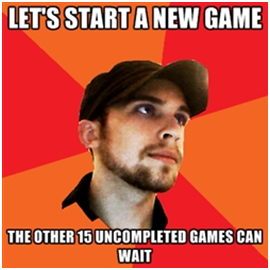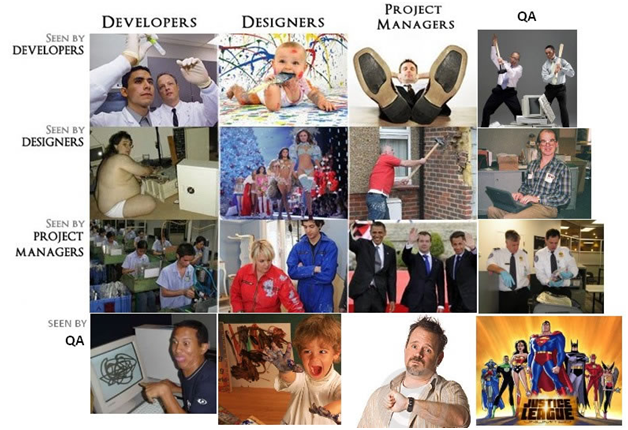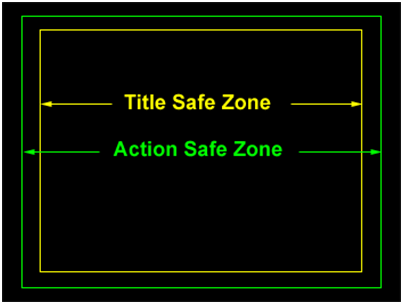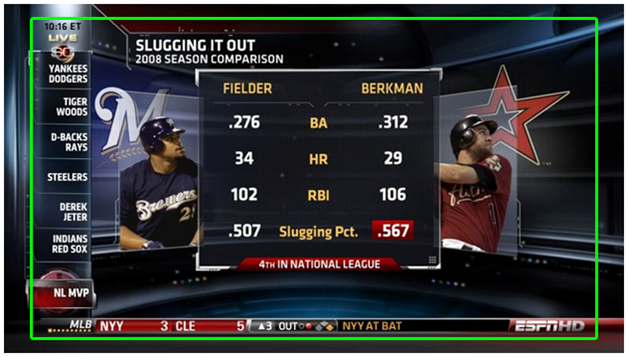Interview with Ryan & Amy Green and the Development Team of That Dragon, Cancer
January 20, 2016 1 Comment
Nearly everybody who has played That Dragon, Cancer has walked away impressed by what it accomplishes. Personally, I consider it a milestone in gaming as a medium for telling real life stories. For that reason, I wanted to talk to the family featured in the game, the Greens, and the development team behind it.
Indie Gamer Chick: The emotions are what stick with people playing That Dragon, Cancer. The sincerity of them. Did you find it difficult to articulate those in game form?
Ryan Green: Not really for my own writing in the game. I usually started from a place of exploring how it felt to be in a place like the hospital, or in the moment of hearing hard news over and over again. Some people have called it “confessional poetry.” And that seems to be an appropriate categorization. Much of what I wrote during Joel’s illness was either poetry or art that I would post on Joel’s blog. I think starting from that place is very disarming for people and they’re willing to sit with me in the midst of those thoughts because they can relate to the things we don’t always say out loud.
Amy Green: The emotions were easy, because we lived them, and we had nothing to hide. However, there were lots of times I wanted to add dark humor to the game, because that’s a part of living with terminal illness too, but Ryan always said no. He was probably right. You never question that someone should be heartbreakingly sad about their child, or desperately hopeful, but some people might have struggled with the idea that we made jokes too, because it was our regular day-to-day life and humor is important. You can’t live through three years of a terminal illness and never joke about it.

Woo hoo! Amy said “dark humor!” That means I can use jokes I cut from my review in the name of good taste. Like this one: “You have to intentionally lose this fight featuring a family friend of the Greens’ who died from cancer, as he fights a literal dragon. I mean, if you have to INTENTIONALLY lose to cancer, shouldn’t this have included power-ups like packs of cigarettes, sunbeds, X-ray machines salvaged from unguarded abandoned hospitals, and now even bacon according to the World Health Organization.“
IGC: That Dragon, Cancer is one of the most emotionally exhausting games ever made. I can’t imagine how taxing it must have been on the team that made it, having to work with it every day. Was there any time where you guys couldn’t take it anymore and needed time to just breathe?
Ryan Cousins (3D Artist): Breaks were always welcomed and needed from time to time. It was most taxing when I first joined the project, and when Joel passed away. But over time you could focus on the love and the repeated scenes no longer impacted me with the same intensity in which they originally had.
Josh Larson (Artist/Programmer): I spent a lot of time polishing and bug-fixing the first iteration of Dehydration, so I spent a lot of time trapped in that room of anguish. I recently realized that I have subconsciously avoided working much on the second iteration of it. Otherwise, there was a period when personal life was stressful and this felt like the hardest project I’ve ever worked on.
But, strangely, there were other times when the project felt easy to work on. I think that speaks to how great our team is, along with how wonderful of a family the Green family is. In addition, I’ve spent a long time in small group Bible studies at church, and I now realize how well that has prepared me for emotional difficulty and has taught me compassion and empathy.
Brock Henderson (Designer): There were quite a few days during development that I shed tears. Some days it was reading a backer’s submission, or hearing a voice over clip, or testing a scene over and over again. Often times during the day I would pray while working, which helped me continue on. At night, I would make sure to make it to the gym each day. Strenuous exercise really helps me reset emotionally and mentally.
IGC: Even though the visuals can be surreal, the game captures emotions so authentic that many people are unable to finish That Dragon, Cancer. That’s a remarkable accomplishment. How hard was it to work those real emotions in?
Cousins: Adding emotions to a scene is always difficult. We spent a lot of time translating emotions into color and light. Iterating on the lighting and animation for every scene. Talking with Ryan Green about key moments and asking him to play them back for me or act them out. Many times we looked through home video for moments I could reference and put into the game. Transcoding Joel into the game was always hard and it couldn’t have been done by one person. Each of the team members helped breathe life into him via sound, animation, coding, and writing.
Josh: I’ve found the hard part is not working the emotions in, but rather not getting in the way. The emotional part felt easy because of the vulnerability and honesty of Ryan and Amy, along with their skill as writers and voice actors. At times it was very hard not to ruin the moment with half-finished game logic due to the difficulties of finding a good design, or with some ridiculous bug that shattered one’s suspension of disbelief. Every video game I’ve worked on has essentially been a house of cards. To me, this house is more sacred when it stands, but that also makes it more disappointing when it falls.
IGC: Was there any aspect of your experience that you chose not to include because you felt you couldn’t properly translate it to a game?
Ryan G: There were things that we wanted to do that we just couldn’t get right. The Joel with the service dog scene was one that we iterated on three or four times. We had Joel playing fetch with the dog, we had the dog doing tricks. But in the end the core was how much Joel loved dogs, and finding a simple implementation that highlighted that fact, in the end seemed like the right move.
IGC: There are many notable movies that focus on cancer and loss. My Life, My Sister’s Keeper, etc. Do you feel that games are a better medium for expressing personal experiences than the passive experience of a movie?
Ryan G: Yes. I think we’ve only been able to hint at what is possible with expressing personal experience in video games. I for one am really intrigued by the new possibilities in VR. Not just in presence and connection between the player and the NPC, but also in terms of expression. We may still be a long way off from natural language processing, but I think body language, and gaze, and player emotion will all serve to draw the player into a conversation as a friend more than just a disembodied observer.
Mike Perrotto (Project Manager): I would agree with Ryan. I’ve been a gamer since my first Nintendo Entertainment System in 1987 and I’ve always related more with video games than any other form of entertainment. I think for many people like me, in the video game industry or not, it’s an exceptional medium to share personal experiences. Honestly, I think the first time a story made me cry, it was told in a video game.
IGC: Without exaggeration, the most common response I’ve seen to That Dragon, Cancer is “I don’t think I can play it.” Especially from parents. People are buying the game because they want to support you but don’t want to actually play it. Were you expecting that?
Ryan G: Yes. It has always been hard to ask someone to come for a few moments and sit with our grief. However we haven’t met anyone yet, that regretted playing the game, once they took the step. And so for that we’re very grateful, because our hope is that players feel as though something was added to their life, not just that we dragged them through mud.
Amy: I think a lot of people would be surprised if they gave the game a try, because it is captivating and whimsical. It hits many different emotional tones, it’s not just a vault of sadness.
IGC: No, seriously, how do Ryan and Amy get on that porch swing in the game?

Ryan G: I may be large, but I am like a cat. You should see me parkour.
Josh: Speaking of, Ryan Cousins, our animator and lighting designer, is an actual certified ninja warrior and parkour-er!
Ryan G: He taught me everything I know. In fact I think he would take full credit for my parkour skills.
Cousins: Ahhh Yes G’s parkour skills.. It was like putting a cat into a bath to get him on that swing, but we got there.
IGC: Your family did the voice acting for the game, and I felt did very well. Was there ever a point where you said “this is going to be too emotionally draining, maybe we should pass it off to voice actors?”
Ryan G: Never. It was always very important to me that Amy, Joel, and the boys voices were in the game. I did have a brief moment of doubt with Isaac and a line we had him read. It was “well that Dragon is going to kill Joel, Joel is going to lose. Because Joel is just a baby and babies can’t kill dragons.” Even though the scene is scripted, that is actually something Isaac said to Amy when he was younger. Children have a way of cutting through euphemism with frank revelation. The reality is Joel was not able to kill that dragon. And babies can’t kill dragons. Others have to kill dragons for them. For us, we couldn’t and wouldn’t shield our sons from Joel’s death. It was something we believed was important to face and have frank discussions about (even if we dressed it in stories of knights and fire-breathing dragons).
IGC: Speaking of which, even though I (unknowingly, and regretfully) poo-pooed on their artwork, I thought your children were pretty dang good in doing their voice work. Do you think that’s something they might want to do more of in the future?
Ryan G: The boys have always been amazingly expressive in their reading, and are fine little actors. We would love to give them the chance to work on other games. They are budding game developers themselves, learning Scratch, and most recently Caleb and Isaac have been creating character concepts in Blender. I love the fact that they want to do what we do and as kids in gaming culture, they’re growing up with an identity as a creator. I think that’s really special about the games industry and we want to encourage that.
Amy: After reading your questions, I asked them if they would want to do more voice acting for video games and they both heartily said yes, and then asked if they would get money for it. Unfortunately, the next day they asked me, “So, wait, do we get to do more voice acting? Did someone ask us too?” and I realized I was like that terrible Hollywood agent that never tries to get anyone work but just talks a lot about what might be possible. Maybe I’ll write fake scripts and let them record them and tell them it is for a video game, and pay them whatever quarters I can find in our sofa. If they ever ask if they can play all the video games they acted in, I’ll have to tell them, “Oh sorry babies, all of those video games were scrapped, but it probably wasn’t because of your acting.”
IGC: The religious aspects of the game are drawing a lot of criticism, unfairly so in my opinion. I didn’t feel I was being preached to. Was it hard to find that balance between explaining how your faith factored into your life without sounding like religious agenda?
Ryan G: We’ve actually been surprised that there wasn’t more criticism. On the whole we find any criticism to be very mild and we’re encouraged by that. We welcome criticism that engages us in productive conversation. The games industry is not really known for honest portrayals of personal faith. Often we get the fringe and cult-like behavior of the faithful, or the type of religion that leaves a wake of destruction behind it, or portrayals of institutional abuse, greed and power.
So just to have our faith be respected by our peers and validated as appropriate to share in the context of our story, even if they disagree with the entire premise, and encouraged to share the core of what makes us who we are, and causes us to believe and act the way we do, is a real blessing.

True story: the day before I played That Dragon, Cancer, I watched the awful (but entertaining) Face/Off with Nick Cage and John Travolta. As I entered this church, the only reason I was able to keep myself from crying was a lingering hope that an epic Mexican standoff would breakout in this scene. With doves. Can’t forget the doves.
Amy: We couldn’t take our faith out of the game, because it was the most vivid part of that season when Joel was ill. However, we weren’t making a game for Christians, so we wanted to be sure someone could value the game without sharing our beliefs. We tried to make most of the strong faith elements of the game something you could skip over if you wanted to, or really dive deeply into if you were curious. We hope people see that faith is not some easy crutch that you fall back to by default, it is challenging. It is a wrestle, but it added so much beauty to our life. Even hope was beautiful even though there were times that the weight of hope felt crushingly heavy.
IGC: Joel was a beautiful child. What’s something about him that wasn’t in the game that you would want the world to know about him?
Ryan G: Joel loved babies. He would squeal in delight if he could tackle and cuddle Elijah when Elijah was first born. We have many videos of Joel crawling into Elijah’s car seat with Elijah in it, or fully subsuming Elijah’s head in a warm wet embrace.
Josh: He loved to play peek-a-boo on Google Hangouts.
Amy: Joel loved mischief. He loved to sit at the top of the stairs where there was a small bookcase. Almost on a daily basis, he pulled every single book off that shelf and threw it down the stairs. Laughing hysterically as they thumped all the way down. He also loved to find the eggs in the refrigerator and throw them all over the floor in the kitchen, eventually we had to put a child lock on the fridge…oh wait, I guess that did make the game last-minute, but a lot of people don’t find that part. If you’ve never tried to clean a dozen eggs off of a kitchen floor, let me tell you, cancel your plans for Saturday night, because it is a hoot.
IGC: Did more gameplay elements, be it mini-games or more point and clickery, get cut from the final game?
Ryan G: Oh yes, and I am not kidding, at one point we had a claw grab mini-game and a shooting gallery and possibly a boardwalk carnival game. We explored many, many things.
Cousins: After Joel passed away we needed to think of the game in a new light. We re-evaluated where we were with the game and decided to strip it down to its core element. Loving Joel. This was a harsh cut but necessary in order to finish the game. Half of the scenes were cut, and many were retailored to fit our vision of how we want to memorialize and love Joel.
IGC: Why do I suddenly crave pancakes?
Cousins: I’ll just leave this here..
IGC: Well, that’s going to be stuck in my head for about a week. Thank you so much.
Amy: How was that video 10 hours long? Please never show that to my children. I can not add “making bacon pancakes” to the never-ending playlist of inane YouTube songs my children have chosen to soundtrack my life with.
Ryan G: So say we all?
Mike: Because Manju.

Heaven is an endless supply of pancakes. Hell is too, but there, they’re supplied by IHOP.
IGC: The scene with Joel hugging the dog caused 10% of all players to slip into a coma via over-warmed hearts. What do you have to say to the families of your victims?
Jon Hillman (Composer): We iterated on the dog interactions more than almost anything in the game. Joel loved dogs immensely, so we really wanted to get this right. What made it into the game includes the audio from home videos of Joel playing with dogs, and some simple loving animated gestures. If we had taken the animations any further, that 10% figure would have been more like 99% – so we’re glad we showed some restraint there.
Cousins: There was a lot more to this scene that ultimately got cut. About roughly 6,000 frames of animation never got used. Just think of how much more you could have loved that dog!
IGC: Oh trust me, if I had loved that dog any more, we’d be legally married in 27 states.
Josh: Amy’s idea to use the stethoscope to explore memories of Joel with the dog saved that moment from getting cut. Thank you Amy!
IGC: One of the more overwhelming parts of That Dragon was the scene with all the cards, especially when you enter the hallway and see how many there are. Those, along with the pictures on the wall and the bottles not written by Amy Green were supplied by the game’s backers on Kickstarter. You guys actually had to input those into the game. What was your reaction when you saw just how many there were, and how many lives you stood to touch?
Cousins: It was one of the most powerful scenes for me. We would get submissions for the art and cards throughout the year. Some of the submissions were incredibly powerful and moved us deeply. But we never felt the real weight of them until we added them all together and got them into the game. I remember taking a short trip and then coming back to see all of the cards implemented. It was a heavy emotional hit and made me realize the true weight of the scene. Many of the scenes we work on a little bit at a time and slowly build it up over the course of months. Incrementally building it like this lessens the emotional impact, but when you take a step away from a scene and come back to it, you can truly appreciate it.
Hillman: Once all the cards were in, I sat down at the piano to figure out how to support that moment musically. Several hours into playing various things, I was flailing, feeling like I would ruin this sacred space in the game, and starting to think silence might be the best option. I stopped, played the scene again, and read each of the 153 cards very intentionally. Then I went back to the piano and recorded what’s in the scene in one take – it might not ever feel perfect to me, but I’m honored to get the chance to help all these people memorialize their loved ones in such a beautiful way.
Brock: The backer submissions really hit me even before they were even in the game. While compiling and organizing the artwork and messages for production, I experienced each submission for the first time. When you think about the loss each person has experienced and the pain and longing those families are still feeling, it becomes too much to process.

Be honest, who else besides me caught themselves saying “Who’s a good boy?” during this scene?
IGC: I have to ask this because I’m getting asked this a ton: any plans for a console release, or a physical copy for PCs?
By the way, if you do go the physical media route, you can do us Californians a solid and include some kind of jar with it. The collected tears could end our drought conditions here.
Ryan G: but then what about all of that salt?
Amy: Well the jar is free, but the desalination kit is only included in the upgraded bonus edition of the game. If you kill all your house plants by watering them with your tears that is on you. Honestly, we would love to expand the reach of the game onto other platforms, but we will have to wait and see if we can afford to invest more time.
IGC: (Cathy’s eyes go shifty while she silently hugs her “Tear Desalination Machine” patent) Soon my pet. Oh, ahem.. You guys did a really remarkable job of putting a difficult story to a visual form. What’s next for your studio? Something cheerful maybe? With, like, puppies and caramel corn?
Cousins: An FPS for sure..
Hillman: Perhaps, our best idea so far is centered around cupcakes, so yeah
Ryan G: Yessss Cupcake Carnage.. (IGC note: Simpsons did it first)
Mike: And icing! Lots of icing!
Amy: You guys, she would hate that idea. (It involves more drawing from our kids.)
IGC: I’ll never live that down.
 That Dragon, Cancer is available now on Steam.
That Dragon, Cancer is available now on Steam.
Check out Cathy’s review here.
The Greens support the Morgan Adams Foundation. Visit their website and if you like what you see, how about giving them a couple of bucks?
If you took a drink for every use of the word “iterate” or a variation of it over the course of this interview, you would be dead by now.











You must be logged in to post a comment.